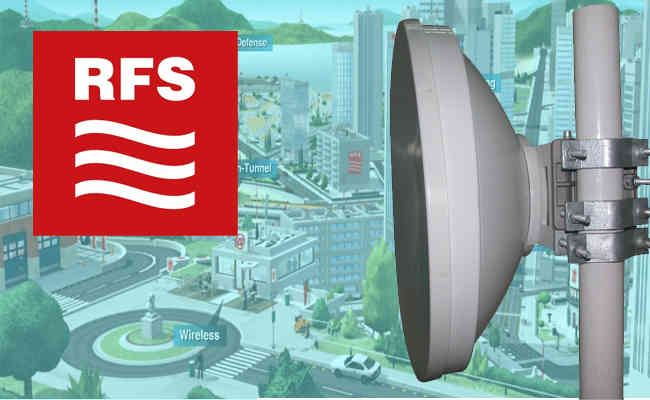RFS Launches Dual-band Microwave Antennas
By MYBRANDBOOK

German telecom equipment maker Radio Frequency Systems (RFS) has launched a family of dual-band microwave antennas that can be used as an alternative to fibre backhaul.
By combining the E-band antenna which give capacity but has distance limitations, with an additional frequency, the dual-band antenna proves itself capable of delivering higher capacity over longer distances. RFS’ dual-band antennas, have already been deployed by a major OEM in Eastern Europe, proving that microwave works as a viable alternative to fibre for 5G backhauling requirements in urban areas.
Although fibre is generally considered to be the standard solution for 5G backhauling due to its high throughput, the capabilities demonstrated in a real-world deployment by RFS’ dual-band microwave antennas highlight the possibilities of microwave backhaul for 5G.
“As mobile operators plan their evolution to 5G, many are asking whether microwave transport technology is advanced enough to handle the demands of a 5G radio access network,” says Benoit Bled, product line manager for microwave antennas at RFS.
“By supplementing traditional E band transmissions with 15, 18 or 23 GHz transmissions, we’ve unleashed the full power of E band and made 5G microwave backhaul a reality. Our dual-band microwave antennas have already been used in a European deployment that proves it,” he adds.
RFS’ dual-band microwave antennas support high-capacity, low-latency 80 GHz E band transmissions as well as higher availability 15 GHz, 18 GHz or 23 GHz transmissions that can travel longer distances. With this combination, the medium-frequency band can supplement the E band with additional capacity and longer reach. As a result, mobile operators can backhaul higher volumes of 5G traffic over longer distances than they can with single-band microwave antennas and with lower latency than fibre connections.
The dual-band approach also brings with it an array of additional benefits for operators when compared to using two single-band antennas that support carrier aggregation. The visual impact is reduced as a result of consolidating into a single antenna. Operators have a lower cost of ownership due to reduction in transportation, installation, and tower leasing costs. They also benefit from easier upgrades; when operators come to replacing 2 ft single band link to a Dual Band antenna link, the identical form factor minimises the challenges of introducing new equipment. Additionally, deployment is simplified as the initial alignment is done with Microwave frequency which means only fine-tuning alignment is required for the E band.


Legal Battle Over IT Act Intensifies Amid Musk’s India Plans
The outcome of the legal dispute between X Corp and the Indian government c...

Wipro inks 10-year deal with Phoenix Group's ReAssure UK worth
The agreement, executed through Wipro and its 100% subsidiary,...

Centre announces that DPDP Rules nearing Finalisation by April
The government seeks to refine the rules for robust data protection, ensuri...

Home Ministry cracks down on PoS agents in digital arrest scam
Digital arrest scams are a growing cybercrime where victims are coerced or ...


ICONS OF INDIA : SANJAY GUPTA
Sanjay Gupta is the Country Head and Vice President of Google India an...

ICONS OF INDIA : SANTHOSH VISWANATHAN
Santhosh Viswanathan is the the Vice President and Managing Director f...

Icons Of India : Dilip Asbe
At present, Dilip Asbe is heading National Payments Corporation of Ind...


CERT-IN - Indian Computer Emergency Response Team
CERT-In is a national nodal agency for responding to computer security...

IOCL - Indian Oil Corporation Ltd.
IOCL is India’s largest oil refining and marketing company ...

PFC - Power Finance Corporation Ltd
PFC is a leading financial institution in India specializing in power ...


Indian Tech Talent Excelling The Tech World - JAYASHREE ULLAL, President and CEO - Arista Network
Jayshree V. Ullal is a British-American billionaire businesswoman, ser...

Indian Tech Talent Excelling The Tech World - Aman Bhutani, CEO, GoDaddy
Aman Bhutani, the self-taught techie and CEO of GoDaddy, oversees a co...

Indian Tech Talent Excelling The Tech World - Sanjay Mehrotra, CEO- Micron Technology
Sanjay Mehrotra, the President and CEO of Micron Technology, is at the...
 of images belongs to the respective copyright holders
of images belongs to the respective copyright holders